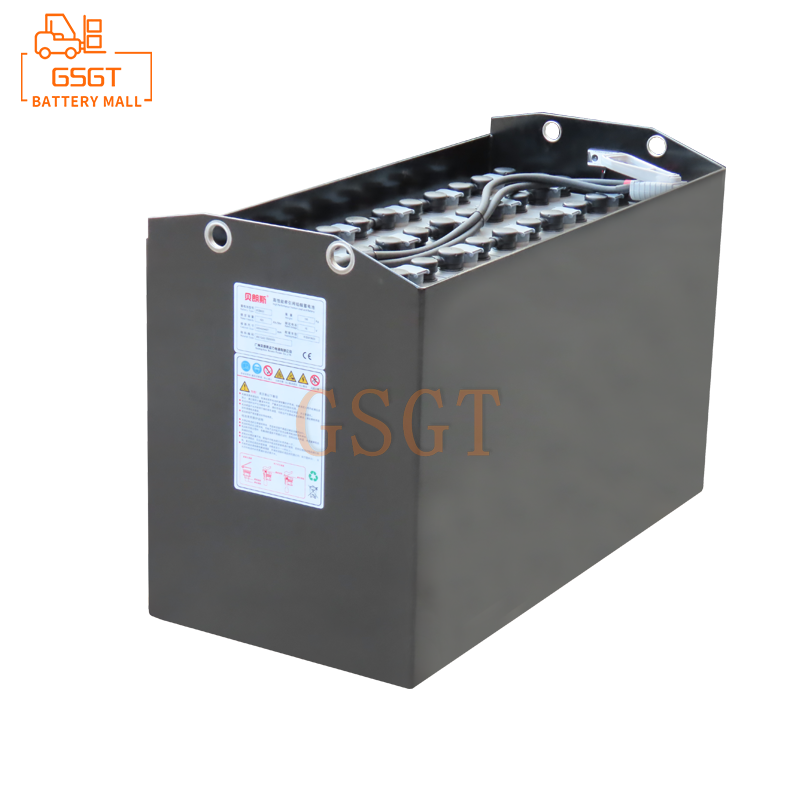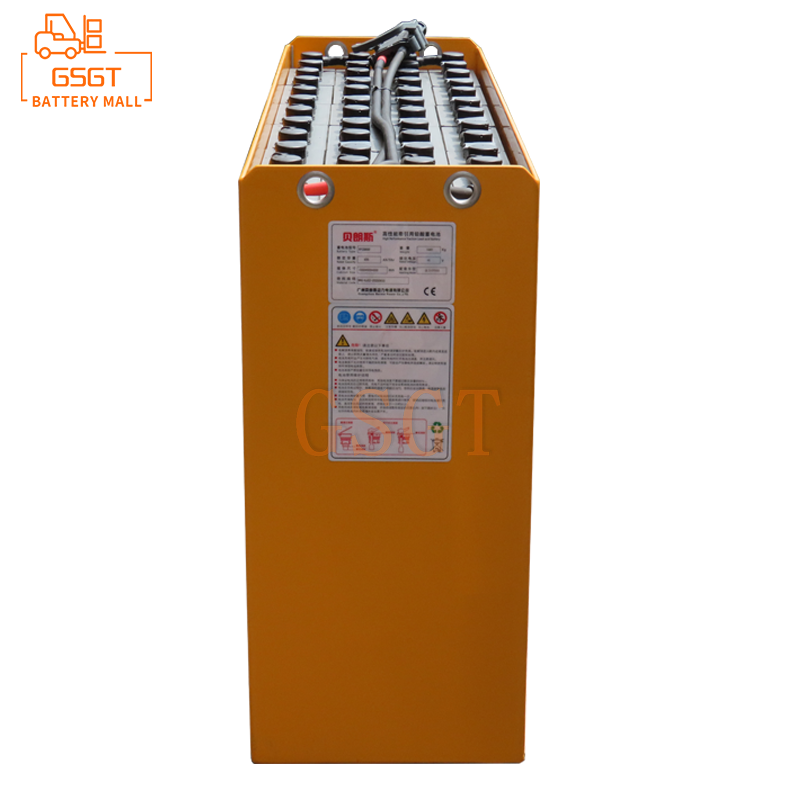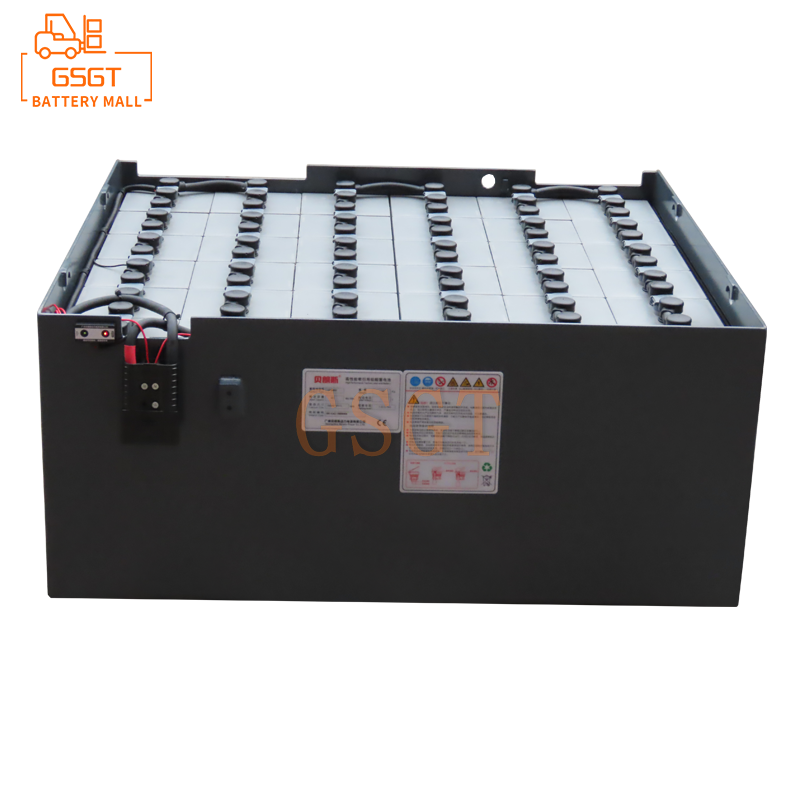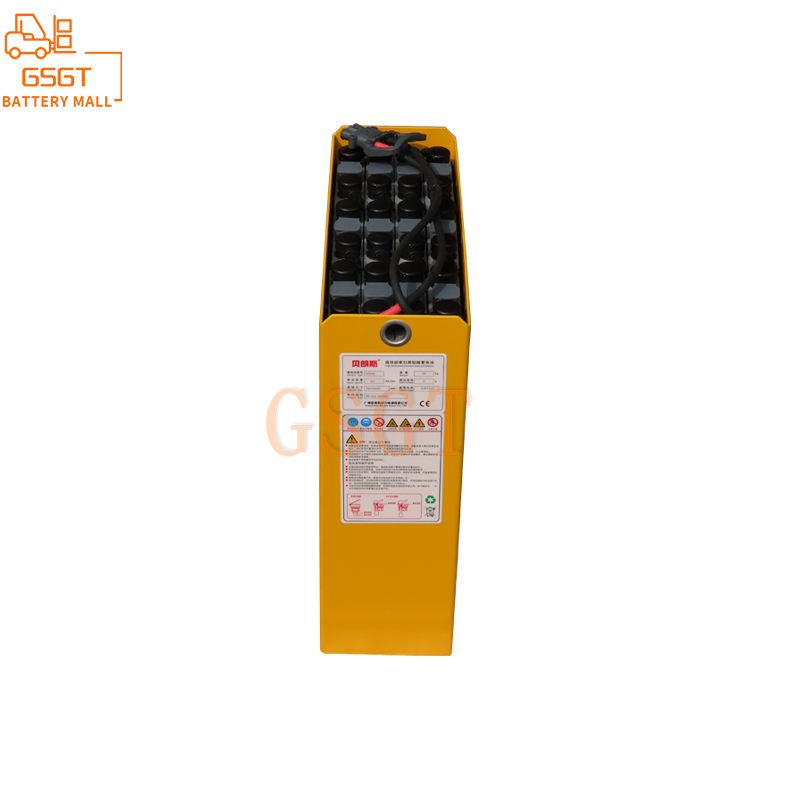Time:2025-04-17 10:40:56
Browse:478
In the daily operation of the manufacturing industry, forklift is the main equipment to undertake the task of material handling, and the stability and adaptability of its power supply are directly related to production efficiency. As a common power source of forklift, lead-acid battery occupies an important position in the field of forklift power due to its mature technology, cost advantage and excellent high current discharge performance. However, there are many kinds of lead-acid batteries on the market, and how to accurately select them has become a key problem faced by manufacturing enterprises. This paper will comprehensively analyze the key points of selection and provide detailed and practical guidelines for enterprises.
Working principle and classification of lead-acid batteries
■ How it works
Lead-acid batteries convert electrical and chemical energy into each other based on specific chemical reactions. When charging, the electric energy drives the lead sulfate to change into spongy lead and lead dioxide, and the concentration of sulfuric acid in the electrolyte increases. The discharge process is on the contrary, spongiform lead and lead dioxide react with sulfuric acid to generate lead sulfate and water and release electrical energy, this reversible reaction mechanism is the core of understanding the performance and use of lead-acid batteries, and has important guiding significance for selection.
■ Category
1. ** Starting lead-acid battery ** : This type of battery is designed for instantaneous high-current start of automotive and other equipment, and can output strong current in a short time. However, its cycle life is short, and it is difficult to adapt to the working mode of frequent charge and discharge of forklifts, so it is basically not considered in the selection of forklifts.
2. ** Traction lead-acid battery ** : This is a type of battery designed for electric vehicles, such as forklifts and electric vehicles. It has excellent deep cycle discharge ability and fits the characteristics of frequent charge and discharge during forklift operation, and is the mainstream choice of forklift lead-acid batteries. Traction lead-acid batteries can be subdivided into ordinary open type, valve-controlled sealed type (including AGM and colloidal batteries).
3. ** Lead-acid storage battery ** : mainly used for long-term energy storage and slow release. However, in the application scenarios of forklifts, its discharge characteristics and power output cannot match the requirements of frequent start and stop of forklifts and fast handling of goods, and it is generally not used as a power source for forklifts.
Interpretation of performance parameters of forklift lead-acid batteries
■ Voltage
The voltage of the lead-acid battery is the key parameter, which is commonly used for forklifts with 24V, 36V, 48V, 72V and other specifications. The motor and control system of the forklift have strict requirements on the input voltage, and the selected battery voltage must be accurately matched with the rated voltage of the forklift. If the rated voltage of the forklift is 48V, but the use of 36V battery, the forklift may not be able to start, even if it is barely started, it will not work normally due to insufficient power, and may damage the motor and other parts; On the contrary, the use of batteries higher than the rated voltage will overload the forklift circuit components, bringing serious safety risks.
■ Capacity
Capacity is measured in ampere-hours (Ah) and reflects the amount of charge released by the battery under certain discharge conditions. Forklift trucks have high working intensity and long working time, which require high battery capacity. The larger the capacity, the more power the battery stores, and the longer the forklift lasts. In the manufacturing industry, the battery capacity required for forklifts ranges from 200Ah to 1000Ah depending on the operation scenario and load. For example, a forklift truck carrying goods in a logistics warehouse with high frequency may require a large-capacity battery of more than 800Ah in order to ensure all-day operation; In the workshop forklift with low working intensity and short working time, 400Ah-600Ah batteries can meet the needs. When selecting the type, it is necessary to integrate the actual working time, running speed, load weight and other factors of the forklift truck to ensure that the battery capacity can meet the operation needs and will not cause cost waste.
■ Cycle life
Cycle life refers to the number of complete charge and discharge processes of the battery from full charge to full discharge and then to full charge. When the battery capacity is reduced to about 80% of the initial capacity, the number of cycles experienced is the cycle life. Forklift lead-acid battery cycle life is usually 1500 times. The battery with long cycle life and low replacement frequency during long-term use can effectively reduce the overall use cost. For manufacturing enterprises that frequently use forklifts, it is particularly important to choose batteries with long cycle life.
■ Discharge rate and discharge characteristics
Discharge rate indicates the output current value of the battery after discharge within a specified time, which is usually expressed as C. For example, 1C discharge rate refers to the current of the battery within 1 hour, and 0.5C is the current of the battery within 2 hours. At different discharge rates, the discharge characteristics of lead-acid batteries are different. The higher the discharge rate, the faster the battery output voltage drops, and the actual discharge capacity will be reduced. When the forklift is working, there is often a short time of large current discharge, such as starting, accelerating, climbing and carrying heavy objects. Therefore, it is necessary to select a battery that can adapt to the high current discharge needs of the forklift to ensure that the battery can still maintain a stable voltage output and sufficient discharge capacity at a high discharge rate to ensure the normal operation of the forklift.
Forklift operation scene factors to be considered when selecting
■ Load weight and lifting height
The load weight and lifting height of forklift directly determine its working intensity and power requirements. In manufacturing workshops or warehouses, the weight of handling goods and lifting heights vary. For forklift trucks that frequently move heavy loads and lift high heights, select large-capacity, high-voltage lead-acid batteries, and ensure that their high-current discharge performance is excellent to meet the power requirements of heavy-duty forklift trucks and high-lift operations. On the contrary, if the forklift is mainly handling light goods, the lifting height is low, such as the electronic components workshop handling a small material box within a few hundred kilograms, the lifting height is not more than 3 meters, you can choose a small capacity, low voltage battery, reduce costs and meet the actual work.
■ Travel distance and operating time
Different manufacturing enterprises, plant layout and warehouse scale are different, forklift driving distance and daily operation time are different. If the forklift needs to shuttle frequently in the large warehouse or factory area, the driving distance is long and the operation time is long, such as large logistics warehousing enterprises, the forklift may run uninterrupted all day, at this time, the large-capacity battery should be selected to ensure the battery life, reduce the charging frequency, and improve the work efficiency. In some small manufacturing factories, forklifts have a small operating range and a short time, and batteries with relatively small capacity can be selected to reduce procurement costs.
■ Work environment
1. ** Temperature conditions ** : The performance of lead-acid batteries is significantly affected by temperature. In the high temperature environment, the chemical reaction of the battery is accelerated, the self-discharge is increased, and the electrolyte evaporates quickly, which may shorten the battery life. At low temperature, the internal resistance of the battery increases, the viscosity of the electrolyte increases, and the capacity and discharge performance of the battery decrease. Forklifts that operate frequently in high temperature workshops or outdoor in summer should choose lead-acid batteries with good high temperature resistance, such as batteries with special electrolyte formula and heat dissipation design; Forklifts working in low-temperature environments such as cold storage need to be equipped with batteries with excellent low-temperature performance, which are usually able to maintain good discharge performance at low temperatures by optimizing plate materials and electrolyte composition.
2. ** Ventilation ** : Ordinary open lead-acid batteries will produce flammable and explosive gases such as hydrogen during the charging and discharging process. If the forklift operating environment is poorly ventilated, such as closed warehouses or narrow workshops, it is necessary to avoid the use of ordinary open batteries, and instead choose valve-sealed lead-acid batteries. Valve-controlled sealed batteries can effectively inhibit gas escape, reduce safety risks, and are more suitable for use in poorly ventilated environments.
Cost analysis
■ Initial purchase cost
The initial procurement cost of different types, specifications and brands of lead-acid batteries varies greatly. In general, the price of ordinary open lead-acid batteries is relatively low, and valve-sealed lead-acid batteries, especially products with advanced technology, are higher in price. Enterprises in the selection, not only the initial procurement cost as the only consideration, but to integrate other factors. For example, although the procurement cost of ordinary open-end batteries is low, it requires regular addition of electrolyte, high maintenance costs, and relatively short service life; Although the purchase price of valve-controlled sealed batteries is high, they are maintenance-free or have a small amount of maintenance and a long cycle life, which may be more advantageous from the perspective of long-term use costs.
■ Cost of use
Usage costs include battery charging costs, maintenance costs and replacement costs. Charging costs are related to battery capacity, charging efficiency and local electricity prices. Choosing a battery with high charging efficiency can reduce long-term charging costs. In terms of maintenance costs, ordinary open lead-acid batteries need to regularly check the electrolyte level and density, add distilled water or electrolyte, clean the battery surface, check the pole connection, etc., and the maintenance workload is large and the cost is high; The valve-controlled sealed lead-acid battery basically requires no maintenance, or only a simple appearance inspection, and the maintenance cost is low. The replacement cost depends on the cycle life of the battery, and the replacement frequency of the battery with a long cycle life is low, and the replacement cost is low. Enterprises should take these cost factors into account and choose the battery scheme with the lowest overall cost.
In the manufacturing industry, the selection of lead-acid batteries for forklifts is a complex and critical decision-making process. Enterprises need to comprehensively consider the working principle of the battery, classification, performance parameters, operation scenario requirements, brand quality and cost and other factors, weighing the pros and cons, in order to choose the most suitable lead-acid battery for the forklift, ensure the efficient and stable operation of the forklift, and provide strong support for the production and operation of the enterprise.

$2450

$3810

$4045

$1270

MESSAGE
Professional And Efficient
Security
Affordable Price
Professional Services